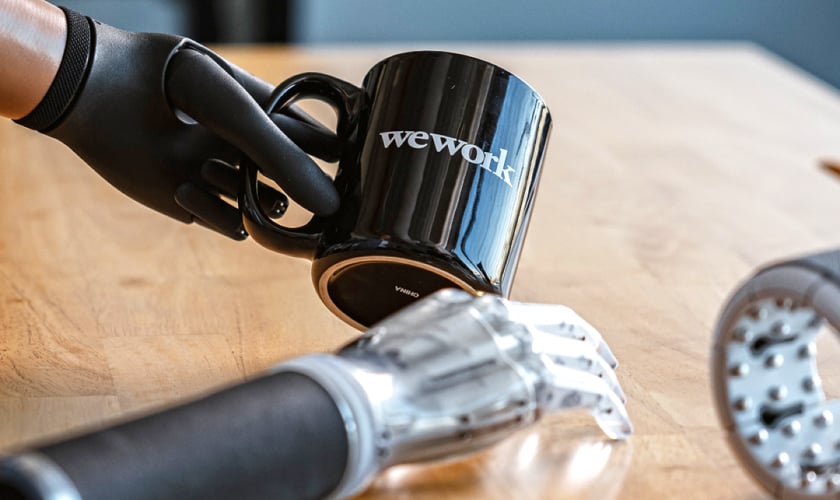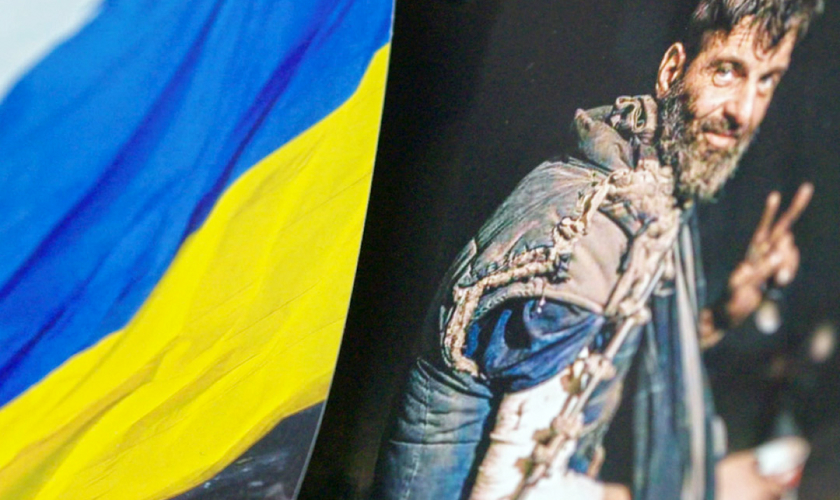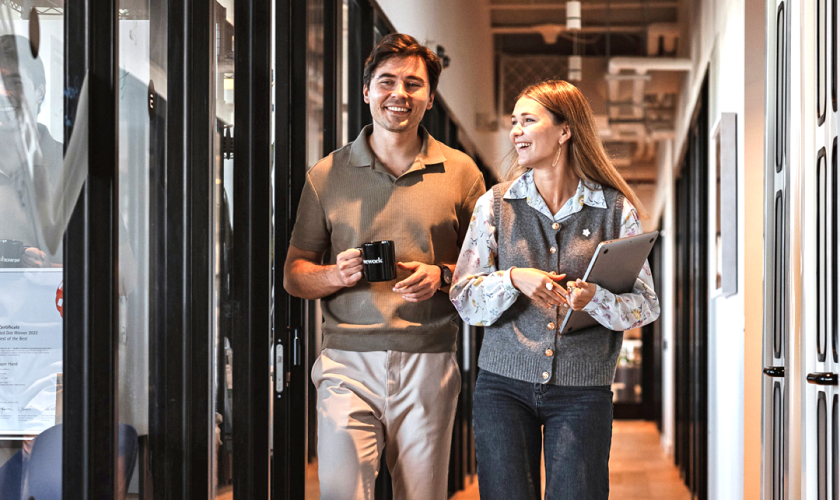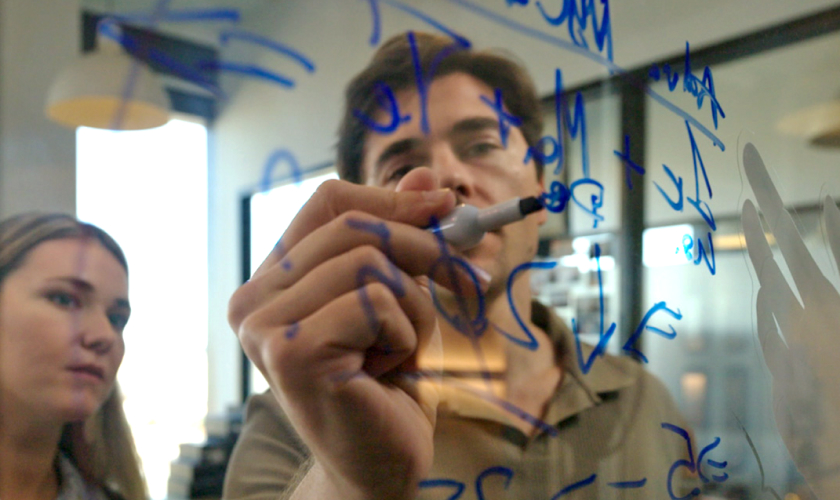Esper Bionics

How Esper Bionics is advancing human abilities with life-changing technology
Esper Bionics is changing the future of prosthetics, and they’re doing it at WeWork.
Volodymyr lost both hands in the war in Ukraine, but he wouldn’t let that stop him from living fully. After being outfitted with Esper Hands, a self-learning bionic prosthesis, Volodymyr regained his independence—going back to work, driving a car, and even picking up painting for the first time. Recently, he held his first art exhibition.
And it’s all because of the technology from Esper Bionics, an innovative startup based in New York City on a mission to stretch human abilities and fulfill the lives of billions of people around the globe.
The minds behind the bionics
In 2007, Dima Gazda—cofounder and CEO of Esper Bionics—was a doctor working at the crossroads of medicine and engineering. That year, he met a young woman who had lost her hand in a car accident. This encounter inspired Gazda to research human augmentation technologies and focus on developing wearable prosthetics.
Fast-forward to 2018, when Gazda met Anna Believantseva, Esper Bionic’s cofounder and COO. At the time, Believantseva oversaw product launches on platforms like Kickstarter and Indiegogo. Believantseva and Gazda met at one of these fateful launches, where Gazda shared his vision for a human augmentation startup. Believantseva was all in, and the duo dove into market research.
By 2019, they had added engineering expertise to their team, Ihor Ilchenko, Esper Bionic’s cofounder and VP of Engineering, and developed their first prototype. That prototype would win first place at a startup competition the same year—and change lives going forward.
Revolutionizing next-gen prosthetics
Today, Esper Bionics isn’t just building cutting-edge prosthetics; it’s pushing boundaries. “We believe that human capacity and abilities are underestimated,” says Gazda. “We aim to unleash them.”
To do that, they’ve created a three-part bionic system that advances human capabilities and removes human limitations:
- Esper Hand: A self-learning bionic prosthesis using AI and ML to predict and adapt to user movements intuitively.
- Esper Control: A non-invasive brain-computer interface with advanced sensors to monitor prosthetic movement.
- Esper Platform: Cloud-based AI software that analyzes sensor data and learns and customizes prosthetic control for each user.
“Building advanced wearables and learning to harness the power of AI are just the first steps to Esper Bionics’ endgame,” adds Gazda.

Putting life back in people’s hands
At the helm of the bionic system is Esper Hand, a bionic hand for those born without hands or who have had amputations. Controlled by muscle signals, Esper Hand adapts to patterns over time, becoming intuitive and effortless. For example, if someone wants to grab an object, Esper Hand will recognize the situation and propose the needed grip, explains Believantseva.
Esper Hand is also the smallest hand on the market, consciously developed to be as close as possible to the anatomical elegance of the human hand, says Believantseva. She explains how, after traumatic amputations, many people experience psychological distress adapting to their new limbs, and traditional robo-hands with producer logos often exacerbate the alienation.
And while the Esper Hand is not yet as dexterous as biological hands, Believantseva and Gazda believe that one day, it will be. “We aim to make this prosthetic as smart as possible,” says Believantseva. Thus far, their purpose has led to some unimaginable results.
Alexis, a medical doctor, lost his hand during the war in Ukraine while trying to evacuate people from the front line. Four months later, he got the Esper Hand prosthesis—and was back at the front line. When those he was evacuating also lost their legs or hands, Alexis would tell them, “You can do whatever you want…See, I’m using a prosthetic hand, and I’m here saving your life.”

Going global and expanding their reach with WeWork
The goal of going from a bionic device to a fully developed human augmentation ecosystem needed a home. For Esper Bionics, that home became WeWork.
While Esper Hand was developed and manufactured in Kyiv, Ukraine, Gazdav explains how their goal was to introduce it to the US market. “We launched the HQ in New York City in May 2022 to be close to the clinicians and our users.”
Setting up a workspace at WeWork stateside was the final step towards Esper Bionics becoming a distributed team, adds Believantseva. The new space allowed the US team to collaborate more closely, connect with new clients in a bigger market, and gain valuable publicity—publicity that WeWork would celebrate alongside the startup.
When Esper Bionics was featured on the cover of TIME, Gazda remembers walking into the office and a community team member handing him a framed copy of the cover—several days before the magazine came out. “One community member had friends at TIME,” recalls Gazda. “He approached them, got the journal, framed it in a beautiful black frame, and they gave us this gift; it’s something we’ll always remember.”
Since the opening of their HQ in New York, Esper Bionics’ US team hit significant milestones, including getting Esper Hand listed as an FDA-approved prosthesis, receiving a new round of investment, and partnering with the US O&P clinics.
“Though preparing for each was a real challenge, having a comfortable and steady workplace allowed us to focus on those goals,” says Gazda.

Finding a workspace that connects functionality with design
Esper Bionics chose a workspace that aligned with its ambitions. “We love the way WeWork combines intentional design and practical functionality, just like our products,” Believantseva shares. The seamless balance between private areas for focused work, collaborative spaces that foster collaboration, and vast networking opportunities has helped their team thrive.
Since joining the community in 2022, WeWork has become the hub of business operations for Esper Bionics. “All things regarding company finances, working with investors, and partnering with clinicians happen here,” says Gazda. “We also keep our stock of demo-ready Esper Hand prostheses here, coming in handy for events and partner requests or for when CNN visited our office to film our story.”
The supportive environment allows Esper Bionics to focus on revolutionizing prosthetics while leaving logistics—security, office maintenance, utilities, and even international deliveries—to the WeWork team. “There are plenty of ups and downs when you’re on the cutting edge of technology,” says Gazda, “having an office you can rely on puts us ahead of the game.”
For Believantseva, the workspace also offers moments of respite. “My favorite part of the day is when we come to the office early in the morning,” she shares. “No one is here. You feel safe and calm, and you get to work while enjoying the view of the city.”

The next frontier in human augmentation
“We’re on a mission to help everyone, whether that’s a refugee getting back the use of their hands or a surgeon being able to operate again,” says Gazda. Moving forward, Esper Bionics plans to switch its focus to control technology and data collection and aims to collect more body data to create the largest body database.
As they do, one thing powers the momentum: “Seeing people get their lives back and thrive is why we do what we do,” says Believantseva.
What’s next for your big idea? Make it happen at WeWork. Learn more about our flexible workspace solutions that manage operations—so you can focus on innovation.
Interested in how WeWork can help your business?
Discover flexible workspace solutions for teams of all sizes, from private offices to global coworking memberships.
